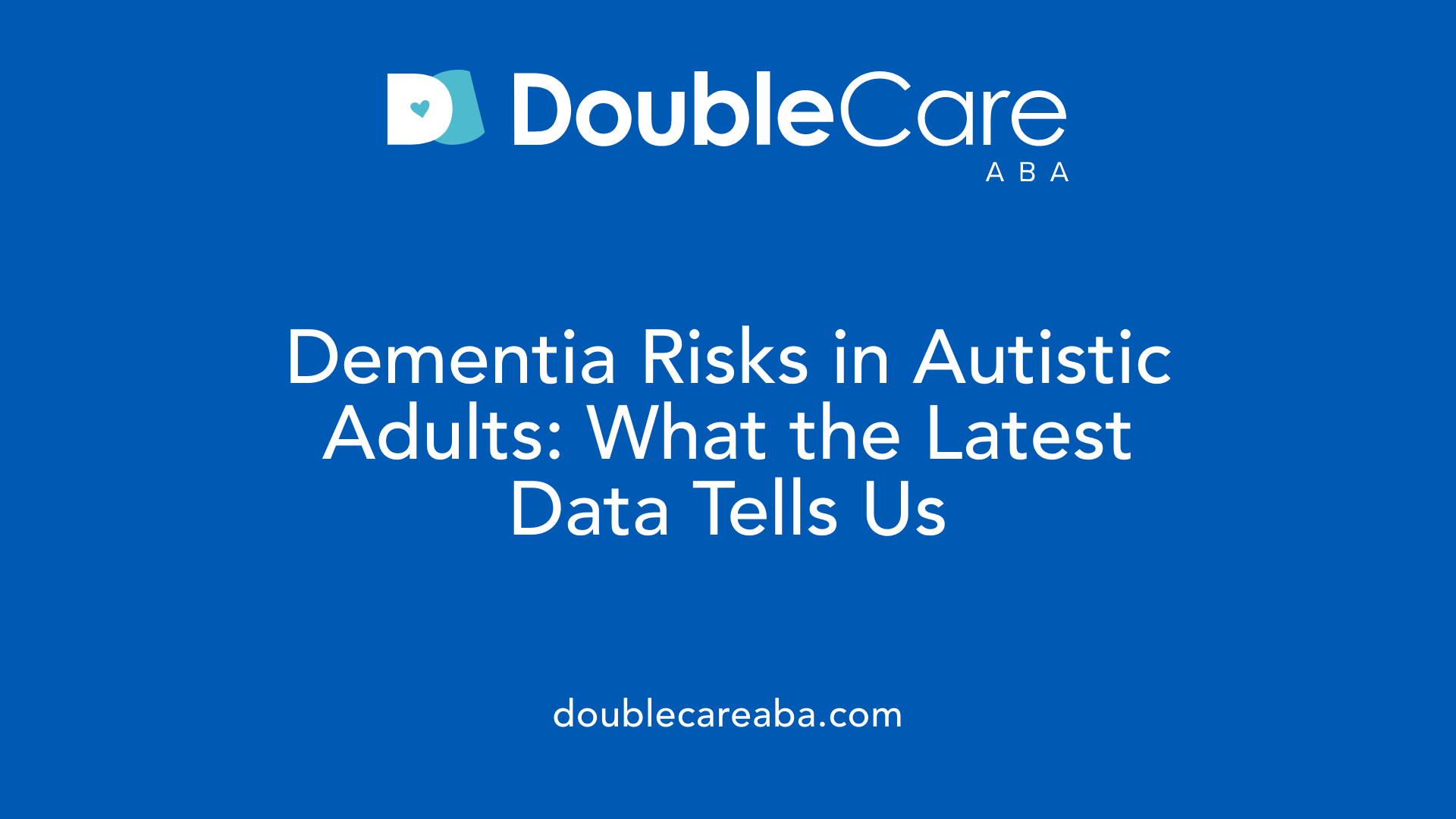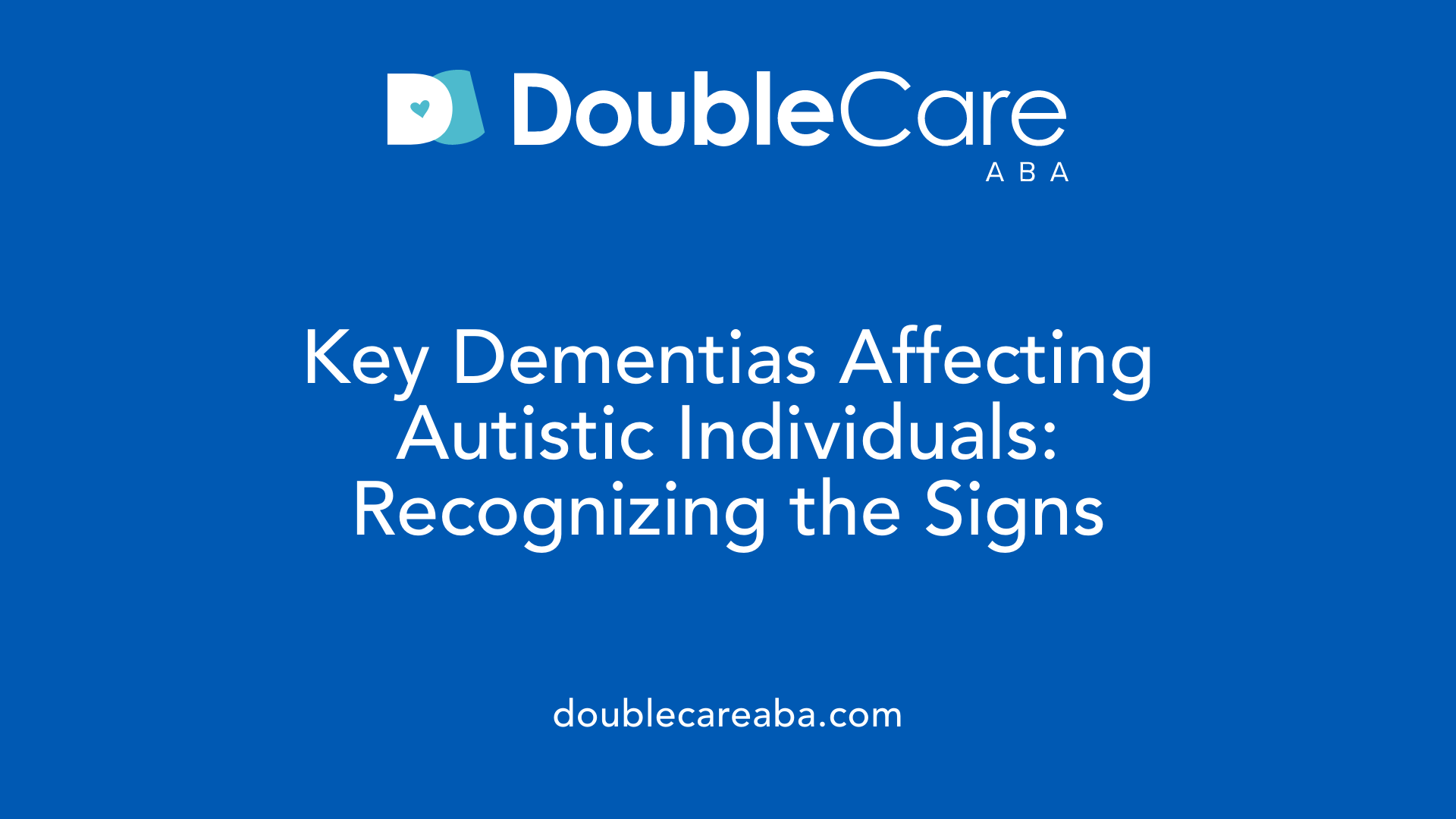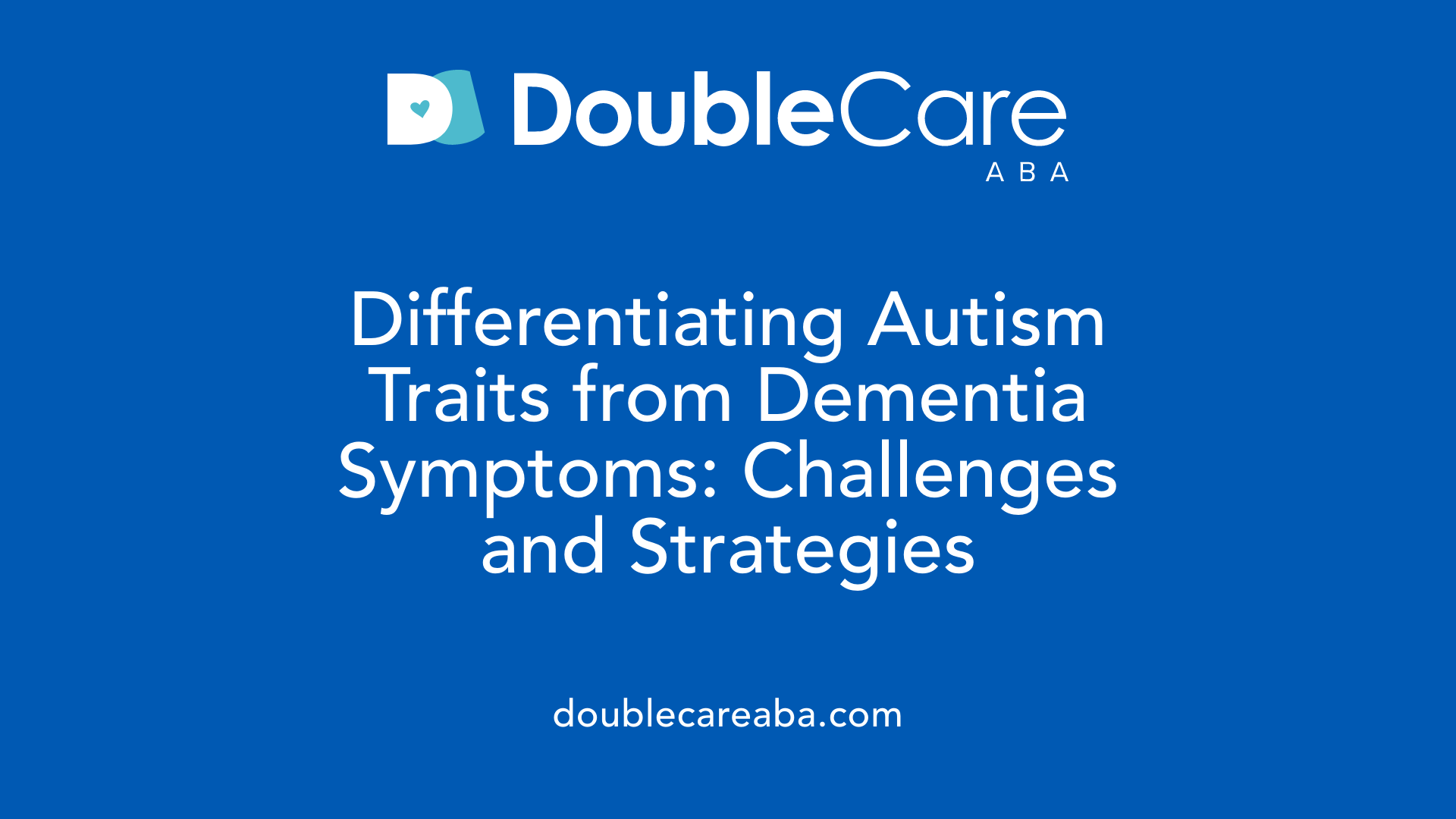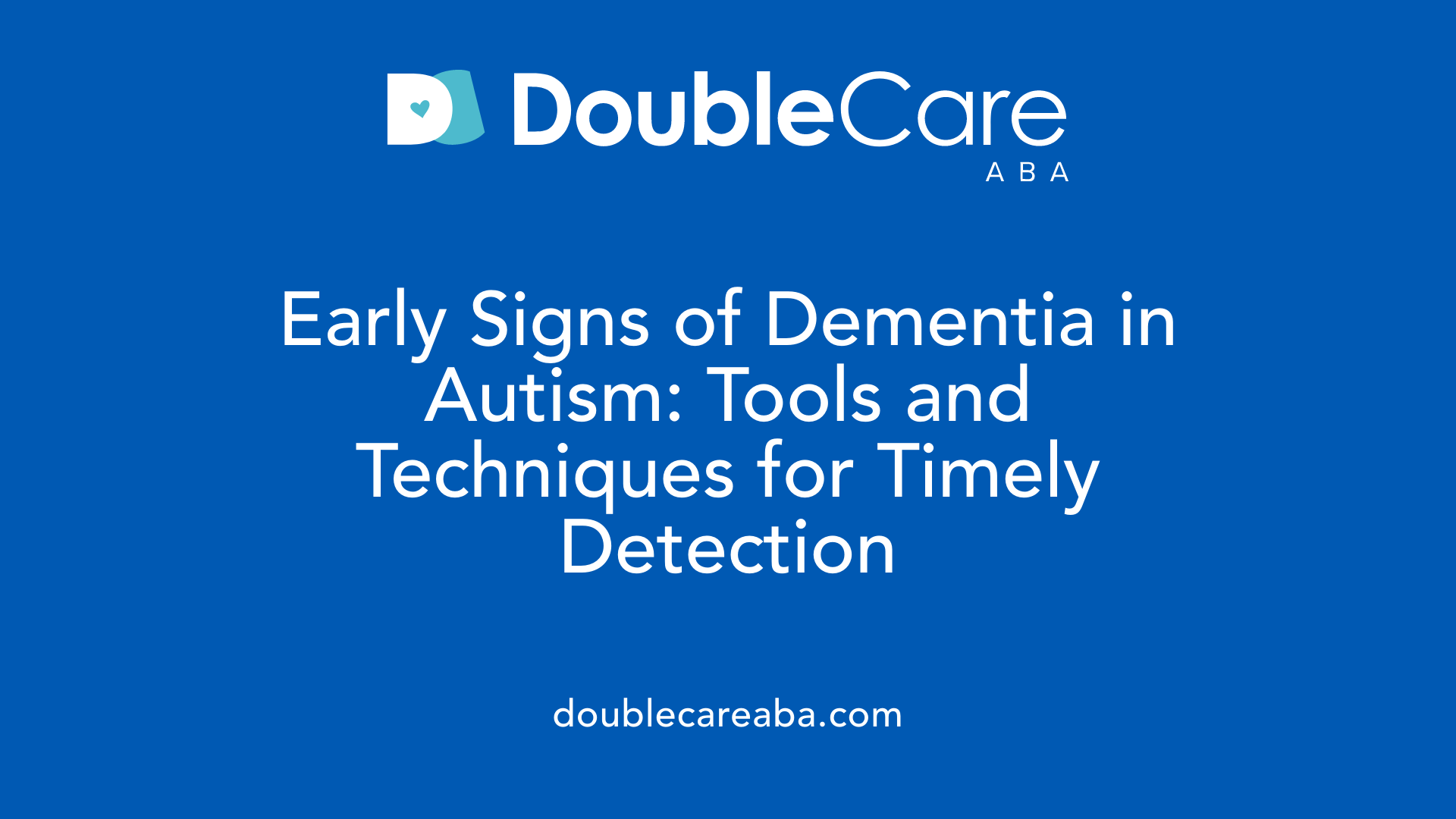Autism and Dementia
Bridging Neurodevelopment and Neurodegeneration: Insights into Autism and Dementia

Understanding the Complex Relationship Between Autism and Dementia
The intersection of autism spectrum disorder (ASD) and dementia presents a multifaceted challenge for clinicians, researchers, and families. As the global population ages, emerging studies have shed light on how neurodevelopmental and neurodegenerative conditions may be interconnected. This comprehensive overview explores the current scientific understanding of aging in autistic individuals, the prevalence and risk factors for dementia, underlying genetic links, and implications for diagnosis and future research.
Prevalence and Aging in the Autistic Population

How does aging affect individuals with autism, particularly regarding cognitive decline?
Aging can pose particular challenges for autistic individuals, especially in the context of cognitive health. While concerns about accelerated cognitive decline in autism exist, recent evidence suggests a more nuanced picture. Many studies indicate that autistic adults do not necessarily experience a faster decline in spatial working memory or overall cognitive function compared to neurotypical peers.
Research focusing on middle-aged and older adults shows that, generally, cognitive changes in autistic individuals follow similar trajectories to those seen in the general population. For example, longitudinal studies involving over 10,000 individuals in the UK with autistic traits found that most maintained their cognitive abilities over several years.
However, certain subgroups within the autistic population may be more vulnerable. Specifically, autistic individuals assigned female at birth could face a higher risk of developing dementia. Moreover, the presence of co-occurring conditions such as intellectual disabilities, cardiovascular issues, or depression can influence individual risk profiles.
Detecting early signs of cognitive decline is essential. This can be achieved through regular screening and adaptations to assessment tools, which help distinguish between autism-related behaviors and emerging signs of dementia. Tailored interventions and proactive health management can greatly improve quality of life and delay the progression of neurodegenerative symptoms.
Overall, current research underscores the importance of personalized healthcare approaches and ongoing monitoring as the autistic population ages, emphasizing that their cognitive aging process may not differ significantly from that of neurotypical individuals.
Statistics on dementia prevalence among autistic individuals
Dementia prevalence among autistic adults varies across studies, but recent comprehensive reports provide clearer insights. In a study analyzing Medicare and Medicaid data from over 114,000 autistic adults aged 30 and above, approximately 8% of those without intellectual disabilities and 8.9% with intellectual disabilities had been diagnosed with dementia. These rates are significantly higher than the roughly 1% seen in the broader population.
The numbers increase with age. For those aged 64 and above, the prevalence reaches approximately 35.1% in autistic adults without intellectual disabilities and 31.2% in those with intellectual disabilities. This indicates that as autistic individuals grow older, the likelihood of developing dementia becomes markedly higher.
Furthermore, research shows that autistic adults living with cardiovascular risks, depression, or other mental health issues tend to have higher chances of developing dementia. The elevation in risk emphasizes the need for integrated healthcare plans tailored to this population’s unique needs.
While some studies suggest that autistic individuals may be less susceptible to dementia, others highlight a heightened risk, especially for early-onset dementia and Alzheimer’s disease. For example, autistic adults are about 2.6 times more likely to be diagnosed with early-onset Alzheimer’s compared to the general population.
Differences in life expectancy and health factors
Despite these risks, the overall age at death for autistic adults remains comparable to that of the general population. However, higher mortality rates are often linked to co-occurring health conditions such as cardiovascular disease, epilepsy, and mental health disorders.
Autistic individuals with Down syndrome or other genetic conditions face an increased risk of dementia, particularly Alzheimer’s disease. These additional health factors complicate aging and necessitate specialized healthcare strategies.
Significant systemic barriers—such as limited access to healthcare, social opportunities, and education—can further impact health outcomes. These barriers often lead to delayed diagnoses and reduced quality of care, contributing to disparities in health and longevity.
Efforts to improve healthcare access, early detection, and individualized intervention are critical to supporting aging in the autistic population. As research evolves, the goal remains to understand better and address the distinct aging trajectories within this diverse group.
Types of Dementia Relevant to Individuals with Autism

What are the common types of dementia relevant to individuals with autism?
Individuals with autism are at risk for several types of dementia, with Alzheimer's disease, frontotemporal dementia, and Lewy body dementia being the most prominent. Each of these conditions involves progressive cognitive decline and behavioral changes that can sometimes mirror or overlap with symptoms of autism.
Alzheimer’s disease is the most well-known form of dementia and has been linked to early onset in some autistic individuals. Research indicates that autistic middle-aged adults are more likely to be diagnosed with Alzheimer’s or related dementias than neurotypical peers, with some studies showing a 2.6 times higher likelihood. Symptoms such as memory loss, difficulty concentrating, and confusion are common, and these can exacerbate existing autism challenges.
Frontotemporal dementia (FTD), characterized by prominent behavioral and language impairments, shares several features with autism, like social withdrawal and difficulty with communication. Although causality isn't fully established, some neuroimaging and postmortem studies point to overlapping neurobiological pathways involving frontal and temporal brain regions.
Lewy body dementia presents with visual hallucinations, sleep disturbances, and Parkinsonian motor symptoms—features that can complicate diagnosis in autistic adults, especially given the sensory processing differences common in autism.
Shared symptoms and overlaps with autism
The symptoms of these dementia types often overlap with autism, including behavioral rigidity, social withdrawal, and communication challenges. This overlap can make early diagnosis challenging, as behavioral changes may be attributed to autism rather than neurodegeneration.
Memory impairment, executive dysfunction, and changes in routine behaviors are prevalent in both autism and dementia, necessitating careful clinical evaluation. For example, autistic adults may exhibit increased agitation or irritability, which could be mistaken for dementia-related behavioral disturbances.
Neurobiological and neurochemical pathways involved
Both autism and various dementia types involve disruptions in neurobiological and neurochemical pathways. Alterations in brain regions like the frontal lobes, involved in executive functions and social behaviors, are observed across both conditions.
Research indicates that neurochemical imbalances involving serotonin, glutamate, and acetylcholine play roles in both autism and dementia. For example, disrupted serotonin pathways are linked to behavioral issues in autism and are also implicated in neurodegenerative processes.
Protein processing abnormalities, such as increased accumulation of amyloid-β plaques and tau tangles, are hallmarks of Alzheimer’s disease but have also been identified in postmortem examinations of some autistic individuals, hinting at shared pathogenic mechanisms.
Understanding these overlaps not only aids in diagnosis but also encourages research into common preventative and treatment strategies. Recognizing the neurobiological similarities emphasizes the importance of monitoring cognitive and behavioral changes in autistic adults as they age, ensuring timely care and support.
Genetic and Familial Connections Between Autism and Dementia
How do genetic and familial factors contribute to the connection between autism and dementia?
Research indicates that genetics and family history play a significant role in understanding the links between autism and dementia. Studies have shown that relatives of autistic individuals face an increased risk of developing dementia, with a hazard ratio of 1.36 for parents, which suggests a shared genetic predisposition.
Family and genetic studies reveal that the connection is likely influenced by overlapping hereditary factors. For instance, families with multiple members diagnosed with autism tend to show a stronger association with dementia, hinting at shared genetic vulnerabilities.
Genetic research highlights that while common variants may have limited overlap, rare mutations and specific genetic disorders contribute to both conditions. Genes such as MECP2, FMR1, and APP have been implicated; mutations in these genes can influence neurodevelopmental processes and neurodegeneration, respectively.
Additionally, research points to biological mechanisms like disruptions in synaptic proteins, neurotransmitter systems, and amyloid processing pathways—all involved in autism and dementia. For example, early neuroanatomical changes such as hippocampal shrinkage in autism could predispose individuals to develop dementia later in life.
Family-based studies bolster the idea that genetics contribute to an increased risk, emphasizing the importance of considering familial history in assessing susceptibility. These findings support the hypothesis that shared genetic factors underlie both neurodevelopmental and neurodegenerative disorders.
In summary, a complex genetic landscape influences the connection between autism and dementia. Though current evidence underscores shared hereditary components, ongoing research is essential to clarify specific biological pathways and identify potential targets for early intervention.
Symptoms Overlap and Diagnostic Challenges

Are there specific symptoms of dementia that overlap with autism, and how can they be distinguished?
Autistic adults and individuals with dementia often show similar behavioral and cognitive symptoms, which can complicate accurate diagnosis. For example, both groups may experience social withdrawal, communication challenges, agitation, and behavioral rigidity. These overlapping features can make it difficult to determine whether a person’s changes are due to neurodegeneration or longstanding autistic traits.
To distinguish between these, clinicians rely on comprehensive, individualized assessments. An essential step is reviewing the person's developmental history to identify traits that have been longstanding versus newly emerged symptoms. Specialized assessment tools like the Gilliam Autism Rating Scale-2 (GARS-2) can help evaluate autism-specific characteristics.
Neuroimaging and biomarkers also play a vital role in differential diagnosis. They can detect neurodegenerative changes such as brain atrophy or amyloid plaques characteristic of Alzheimer’s disease. Additionally, longitudinal observations can reveal whether symptoms are progressive—more typical of dementia—or stable, which suggests autism.
Autistic individuals often present sensory sensitivities and unique communication styles that require evaluation environments adapted to their needs. Behavioral changes such as increased agitation or withdrawal should be interpreted carefully, considering both lifelong autism traits and potential signs of neurodegeneration.
Ultimately, differentiating dementia from autism-related features demands a multidisciplinary approach, involving neurologists, psychiatrists, psychologists, and speech and occupational therapists. This comprehensive, tailored assessment ensures accurate diagnosis, enabling appropriate intervention and support for autistic adults experiencing cognitive changes.
Detection, Screening, and Early Intervention Strategies

What are the early signs and diagnostic considerations for dementia in individuals with autism?
Identifying dementia in autistic adults presents unique challenges due to overlapping behaviors and communication styles inherent in autism. Early signs of dementia—such as memory difficulties, confusion, or behavioral changes—can be mistaken for typical autism traits, complicating timely diagnosis.
Diagnostic considerations should involve comprehensive assessments tailored to the autistic population. These include thorough behavioral evaluations, cognitive testing adapted for communication differences, and sensory sensitivities. It's important to establish baseline cognitive and behavioral data early in adulthood to differentiate normal aging changes from decline attributable to dementia.
Reliable diagnosis depends on longitudinal monitoring, which allows healthcare providers to observe subtle shifts over time. Incorporating biomarkers, neuroimaging, and advanced neuropsychological tools enhances accuracy. For example, neuroimaging techniques like MRI can detect brain atrophy or tau protein accumulation, common in Alzheimer’s disease.
Family and caregiver input plays a critical role in identifying behavioral changes that signal emerging dementia. Multidisciplinary teams—including neurologists, psychologists, and occupational therapists—collaborate to interpret findings within the context of the individual's autism history.
Recent research underscores the importance of specialized screening tools designed explicitly for autistic seniors. These tools consider communication differences and sensory sensitivities to improve detection rates.
In summary, early recognition of dementia in autistic individuals relies on detailed, personalized assessments, ongoing monitoring, and the integration of emerging diagnostic technologies. Proactive strategies are essential, given the elevated risk and potential for early onset of dementia in this population.
Research and Scientific Advances
What recent research or scientific literature is available regarding autism and dementia?
Recent scientific investigations highlight a nuanced and complex relationship between autism spectrum disorder (ASD) and dementia. A notable aspect of current research examines familial and genetic factors. Studies indicate that relatives of autistic individuals, especially parents, face a 36% increased risk of developing dementia, hinting at shared genetic or neurobiological pathways underlying both conditions.
Some research suggests that autistic people might have a lower susceptibility to dementia, based on analyses of mortality and health records. Conversely, other studies reveal that middle-aged and older autistic adults are at a higher risk of early-onset dementia, including Alzheimer’s disease, particularly after age 64. For example, data from Medicare and Medicaid found that approximately 8-9% of autistic adults had dementia, significantly higher than the 1% in the general population.
Diagnostic challenges are common, especially among older adults with intellectual disabilities. This has spurred efforts to develop tailored assessment tools and incorporate neuroimaging biomarkers such as tau burden, neurofibrillary tangles, and neuritic plaques, which are associated with Alzheimer’s pathology. Postmortem studies reinforce this link, showing increased Alzheimer’s-related pathologies in autistic individuals.
Emerging longitudinal studies also suggest that certain cognitive functions, notably spatial working memory, decline at comparable rates in autistic and neurotypical populations over time. A recent UK-based study analyzed over 10,000 individuals over 50, finding that spatial memory remained relatively stable, dispelling some worries about accelerated cognitive decline.
Understanding the neurobiological and genetic underpinnings is critical. Evidence points toward shared genetic factors, with some research indicating that the presence of genes like APOE4, associated with Alzheimer’s, is higher among autistic adults. Moreover, neuroimaging studies are beginning to identify biomarkers predictive of dementia risk, aiding early diagnosis.
How is longitudinal research including autistic adults improving our understanding?
Long-term studies are vital in elucidating the aging process among autistic populations. Inclusion of middle-aged and older adults in dementia research is expanding, with some studies beginning to incorporate self-evaluations and neuropsychological assessments tailored for autistic traits. These efforts help clarify whether cognitive decline mimics patterns seen in neurotypical aging or if there are unique trajectories.
For instance, recent longitudinal UK research involving over 10,000 individuals demonstrated that most autistic traits did not lead to faster spatial memory decline, providing some reassurance. These findings suggest that not all cognitive domains are equally affected, and some skills may remain resilient.
Such research emphasizes the importance of early diagnosis and the development of individualized intervention strategies. It also facilitates the creation of multidisciplinary care models involving neurologists, psychiatrists, occupational therapists, and social workers, aiming to improve quality of life for aging autistic adults.
What are the implications for care and management?
The growing body of evidence underscores the necessity for personalized care plans that consider overlapping symptoms of autism and dementia. Behavioral interventions, structured routines, sensory-friendly environments, and involvement of specialists are recommended.
Furthermore, initiatives aimed at early detection—through adapted screening tools and routine cognitive monitoring—are crucial. Since behavioral changes like agitation, social withdrawal, or sleep disturbances may overlap with autism or emerging dementia symptoms, careful evaluation is necessary for accurate diagnosis.
Research also advocates for lifestyle modifications to potentially reduce Alzheimer’s risk, such as maintaining physical activity, social engagement, healthy diet, and managing chronic health conditions.
Lastly, understanding genetic influences could lead to targeted therapies, while neuroimaging biomarkers might enable earlier intervention efforts, ultimately aiming to improve health outcomes and support aging autistic populations.
| Aspect | Focus | Additional Details |
|---|---|---|
| Genetic & Biomarkers | Family risk & neural indicators | Shared genetic pathways, APOE4 prevalence, tau, and plaque imaging |
| Longitudinal Studies | Cognitive trajectories over time | Stability of spatial memory, early detection protocols |
| Care Strategies | Management & intervention | Personalized plans, behavioral management, sensory considerations |
| Research Gaps | Future directions | Need for inclusive studies, tailored diagnostics, multidisciplinary approaches |
Understanding the genetic, neurobiological, and cognitive aspects of autism in relation to dementia remains an evolving field. Continued research is essential to develop effective prevention, early diagnosis, and intervention strategies tailored for this unique aging population.
Advancing Understanding and Improving Outcomes
Ongoing research continues to unravel the intricate links between autism and dementia, emphasizing the importance of early detection, personalized support, and targeted therapeutic interventions. Recognizing shared genetic, neurobiological, and behavioral features aids clinicians in providing better care for aging autistic populations. As scientific understanding deepens, policies and healthcare practices can be adapted to meet the evolving needs of this vulnerable group, ultimately improving their quality of life and long-term health outcomes.
References
- New study shows higher rates of dementia in autistic adults
- Prevalence of Dementia Among US Adults With Autism Spectrum ...
- Editorial: Autism and Dementia and Alzheimer's Disease
- Association between autism and dementia across generations
- Dementia in Adults with Autism: 5 Tips to Take Care of Your ...
- Understanding the link between autism and Alzheimer's disease
- The prevalence and incidence of early-onset dementia among ...
- Autism and Dementia: A Summative Report from the 2nd ... - PubMed
















